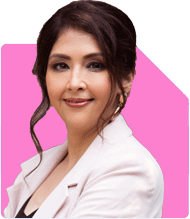33-Year-Old with Young Children: How to Secure Retirement and Education?
Milind Vadjikar | Answer |Ask -Follow
Insurance, Stocks, MF, PF Expert - Answered on Feb 17, 2025
He has a mechanical engineering degree from Government Engineering College, Sambhajinagar, and an MBA in international business from the Symbiosis Institute of Business Management, Pune.
With over 16 years of experience in stock investments, and over six year experience in investment guidance and support, he believes that balanced asset allocation and goal-focused disciplined investing is the key to achieving investor goals.... more

Hello sir, I am 33years old and like to have a stable life with a good retirement corpus along with children education. I have 2 sons both are of 1 and 3years old respectively and my wife is a housewife. I am having FD of 16L, 10L in gold, bought a flat paying housing loan EMI of 25K, having term insurance for 1cr and health insurance for 4L. I am making investments in mutual funds SIP of 30k since last 1 year. Hdfc dividend yeild fund 1000 Icici bluechip fund 8000 Quant small cap fund 1000 Canara robecco small cap fund 1000 Uti nifty index fund 5000 Icici balanced advantage fund 5000 Jm flexicap fund 2000 Quant elss fund 5000 Parag pareekh flexicap fund 2000 Lumsum Investments Sbi healthcare fund 20K Quant infrastruture fund 10k Sbi magnum gilt fund 20k Plz advice....am i really doing good with these investments or shall i replan my investments....
Having 12 funds(9 sip+3 lumpsum) in portfolio is not required.
You need to just 4 funds for your sip of 30 K(divided equally):
1. Flexicap fund
2. Large and midcap fund
3. Balanced advantage fund
4. Multi asset allocation fund
You may consider exiting the sectoral, thematic and debt fund owned by you and redeploy it in your regular funds.
This ensures equity(large cap oriented)is predominant asset class in your portfolio but it also has exposure to debt and gold for balance and risk mitigation.
Also keep a target to step up sip amount every year by 7-10% atleast.
This will go towards higher education provision for your kids. (~1.85 Cr in 15 years considering 7% annual top-up and 10% modest returns)
For your retirement planning you may consider NPS and start with a decent amount(~30 K pm) as regular investment since time is on your side(27 years to hit 60 age).[3.45 Cr in 27 years without any step up consideration. 8% returns assumed].
Consider buying home loan insurance and super top-up health cover.
Happy Investing;
X: @mars_invest
You may like to see similar questions and answers below
Ramalingam Kalirajan |10881 Answers |Ask -Follow
Mutual Funds, Financial Planning Expert - Answered on May 12, 2024
Ramalingam Kalirajan |10881 Answers |Ask -Follow
Mutual Funds, Financial Planning Expert - Answered on Jul 15, 2024
Ramalingam Kalirajan |10881 Answers |Ask -Follow
Mutual Funds, Financial Planning Expert - Answered on Jun 02, 2025
Reetika Sharma |423 Answers |Ask -Follow
Financial Planner, MF and Insurance Expert - Answered on Sep 18, 2025
Naveenn Kummar |235 Answers |Ask -Follow
Financial Planner, MF, Insurance Expert - Answered on Sep 18, 2025
Kanchan Rai |646 Answers |Ask -Follow
Relationships Expert, Mind Coach - Answered on Dec 12, 2025
Ravi Mittal |677 Answers |Ask -Follow
Dating, Relationships Expert - Answered on Dec 12, 2025
Ramalingam Kalirajan |10881 Answers |Ask -Follow
Mutual Funds, Financial Planning Expert - Answered on Dec 12, 2025
Ramalingam Kalirajan |10881 Answers |Ask -Follow
Mutual Funds, Financial Planning Expert - Answered on Dec 12, 2025
Reetika Sharma |423 Answers |Ask -Follow
Financial Planner, MF and Insurance Expert - Answered on Dec 12, 2025
Reetika Sharma |423 Answers |Ask -Follow
Financial Planner, MF and Insurance Expert - Answered on Dec 12, 2025
Reetika Sharma |423 Answers |Ask -Follow
Financial Planner, MF and Insurance Expert - Answered on Dec 12, 2025
Reetika Sharma |423 Answers |Ask -Follow
Financial Planner, MF and Insurance Expert - Answered on Dec 12, 2025
Reetika Sharma |423 Answers |Ask -Follow
Financial Planner, MF and Insurance Expert - Answered on Dec 12, 2025
Mayank Chandel |2572 Answers |Ask -Follow
IIT-JEE, NEET-UG, SAT, CLAT, CA, CS Exam Expert - Answered on Dec 11, 2025












.jpg)














